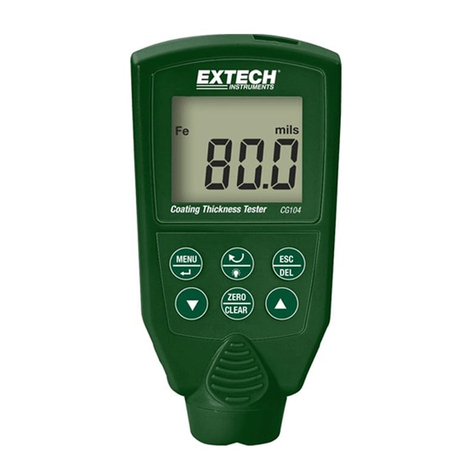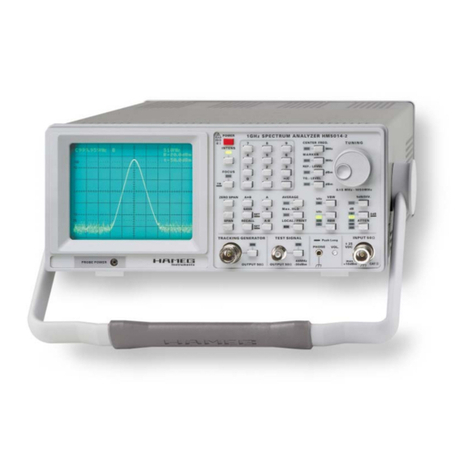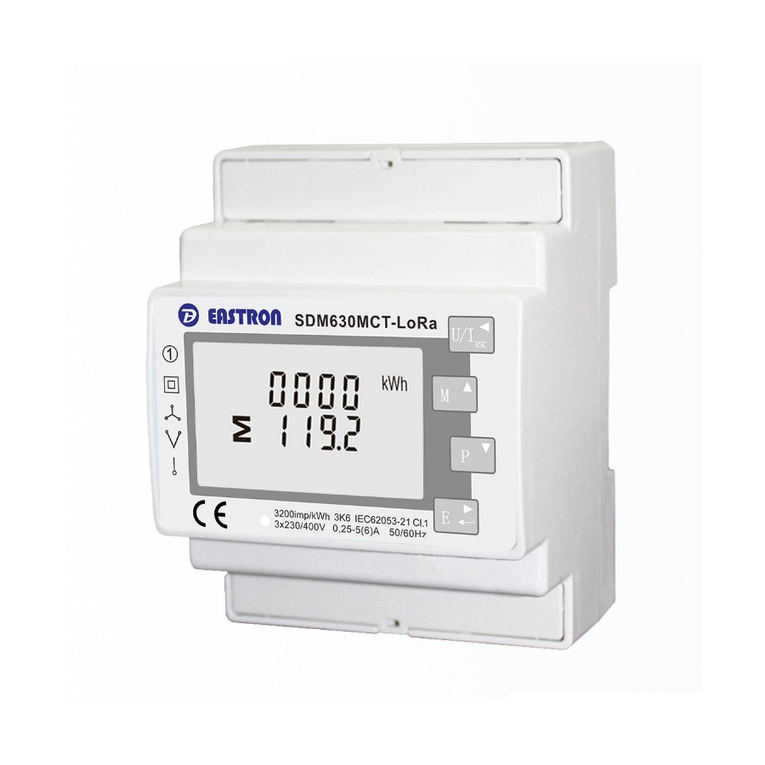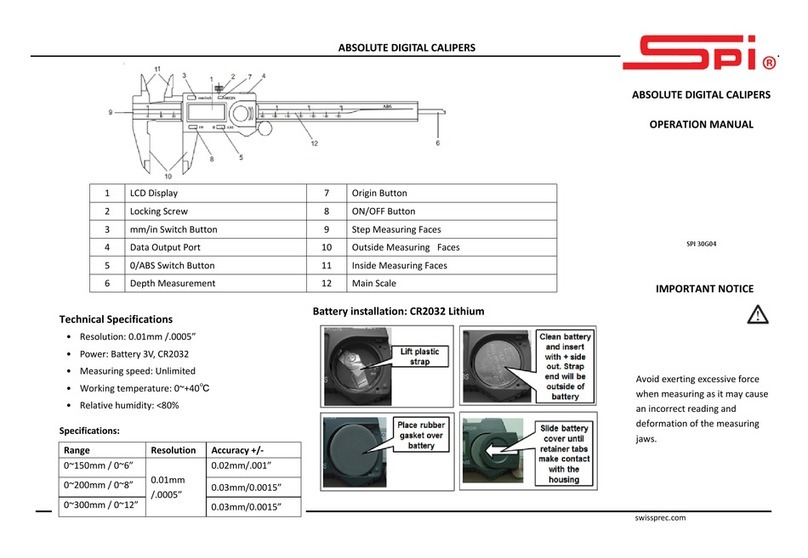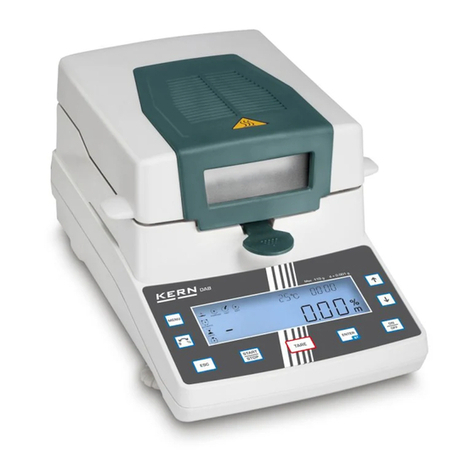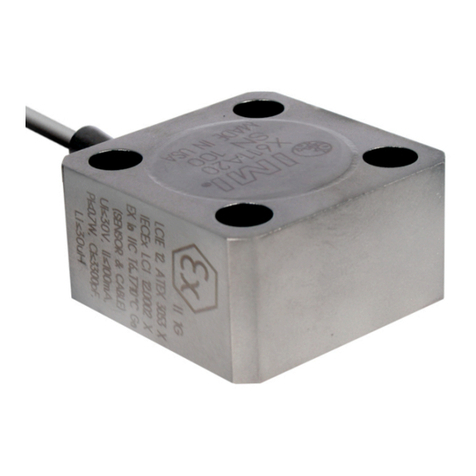Ecotech HiVol 3000 User manual

H
H
Hi
i
iV
V
Vo
o
ol
l
l
3
3
30
0
00
0
00
0
0
High Volume
Air Sampler
User Manual
Version: 1.7
November 2009
Tel: (+61) 1300 364 946. Fax: (+61) 1300 668 763.
E-mail: [email protected].au
Spare Parts parts@ecotech.com.au
Address: International - Head Office
1492 Ferntree Gully rd Knoxfield Victoria, 3180, Australia


HiVol 3000 User manual 1.7 Front Matter
i
Manufacturers statement
Thank you for selecting the Ecotech HiVol 3000 High Volume Air sampler. The
HiVol 3000 is a High Volume Air Sampler with innovative design features, designed
primarily for particulate sampling. By following the guidelines contained in this
manual and with the implementation of a good quality-assurance program, the user
can obtain accurate and reliable data.
The HiVol 3000 is the next generation of samplers incorporating true volumetric flow
control, data logging and advanced programming functions. Reliable electronic air
flow sensing techniques coupled with a proven induction motor ensures a product of
exceptional quality capable of producing years of maintenance free operation.
This User Manual provides a complete product description including operating
instructions, calibration, and maintenance requirements for particulate sampling
techniques.
Reference should also be made to the relevant standards, which should be used in
conjunction with this manual. Some relevant standards are listed in the References
section of this manual.
If, after reading this manual you have any questions or you are still unsure or unclear
on any part of the HiVol 3000 then please do not hesitate to contact Ecotech.
Ecotech also welcomes any improvements that you feel would make this a more
useable and helpful product then please send your suggestions to us here at Ecotech.
Please help the environment and recycle the
pages of this manual when finished using it.
Notice
The information contained in this manual is subject to change without notice. Ecotech
reserves the right to make changes to equipment construction, design, specifications
and /or procedures without notice.
Copyright © 2009. All rights reserved. Reproduction of this manual, in any form, is
prohibited without the written consent of Ecotech Pty Ltd.

Front Matter HiVol 3000 User manual 1.7
ii
WARNING
Hazardous voltages exist behind the sampler control panel and within the sampler
housing. Ensure the control panel and front and rear enclosure panels are always in
place when the sampler is connected to the mains. The front doors should be closed
when the sampler is left unattended. Ensure the power cord, plugs and sockets are
maintained in a safe working condition.
Ecotech recommends the use of Earth-Leakage Protection Circuit Breakers (ELCB)
on the power supply to the HiVol. If operating from a generator, power conditioner,
isolation transformer, or other floating supply, refer to the section on Instrument
setup, as some important modifications are required.
Safety requirements
•To reduce the risk of personal injury caused by electrical shock, follow all
safety notices and warnings in this documentation.
•If the equipment is used for purposes not specified by Ecotech, the protection
provided by this equipment may be impaired.
•Replacement of any part should only be carried out by qualified personnel,
only using parts specified by Ecotech. Always disconnect power source before
removing or replacing any components.

HiVol 3000 User manual 1.7 Front Matter
iii
Factory service/warranty
This product has been manufactured with care and attention.
The product is subject to a 12-month warranty on parts and labour. The warranty
period commences when the product is shipped from the factory. Consumable items
are not covered by this warranty.
To ensure that we process your factory repairs and returned goods efficiently and
expeditiously, we need your help. Before you ship any equipment to our factory,
please call your local Ecotech service response centre (or distributor) to obtain a
return authorisation number.
When you call please be prepared to provide the following information:
1. your name, telephone number and Facsimile number
2. Your company name
3. The model number or a description of each item
4. The serial number of each item, if applicable
5. A description of the problem or the reason you are returning the equipment
(eg, sales return, warranty return, etc)
If you are required to return the equipment an accompanying document with:
1. Your name, number and Facsimile number
2. Your company name with return shipment
3. The model number or a description of each item
4. The serial number of each item, if applicable
A description of the problem/reason you are returning the equipment

Front Matter HiVol 3000 User manual 1.7
iv
Claims for Damaged Shipments and
Shipping Discrepancies
Damaged shipments
1. Inspect all instruments thoroughly on receipt. Check materials in the
container(s) against the enclosed packing list. If the contents are damaged
and/or the instrument fails to operate properly, notify the carrier and Ecotech
immediately.
2. The following documents are necessary to support claims:
a. Original freight bill and bill lading
b. Original invoice or photocopy of original invoice
c. Copy of packing list
d. Photographs of damaged equipment and container
You may want to keep a copy of these documents for your records also.
Refer to the instrument name, model number, serial number, sales order
number, and your purchase order number on all claims. Upon receipt of a
claim, we will advice you of the disposition of your equipment for repair or
replacement.
Shipping Discrepancies
Check all containers against the packing list immediately on receipt. If a shortage or
other discrepancy is found, notify the carrier and Ecotech immediately. We will not be
responsible for shortages against the packing list unless they are reported promptly.

HiVol 3000 User manual 1.7 Front Matter
v
Internationally recognized symbols used
on Ecotech Equipment
Electrical fuse IEC 60417, No. 5016
Earth (ground) terminal IEC 417, No. 5017
Equipotentiality IEC 417, No. 5021
Alternating current IEC 417, No. 5032
Caution, hot surface IEC 417, No. 5041
Caution, refer to
accompanying documents ISO 3864, No. B.3.1
Caution, risk of electric shock ISO 3864, No. B.3.6

Front Matter HiVol 3000 User Manual 1.7
vi
Applicable to optional CE Version HiVol 3000 only
Electrical and Safety Conformity.
Ecotech P/L certifies that this product operates in compliance with the EC Directive
89/336/EEC in reference to electrical emissions and immunity. Specifically the
equipment meets the requirements of EN61000-6-3 for RF Emissions and EN 61000-
6-1 for RF immunity.
In addition, this product has been tested in compliance with the EC Directive
73/23/EEC in reference to electrical safety and meets the requirements of EN 61010-
1.
The equipment must be operated as per Ecotech directions as specified in this manual.
Safety Requirements
To reduce risk of personal injury caused by electrical shock, follow all safety
notices and warnings in this documentation.
This equipment should always be used with a protective earth installed.
The HiVol 3000 is compliant with the requirements of EN 61010-1, Safety
Requirements for Equipment for Measurement, Control, and Laboratory Use.
If the equipment is used for purposes not specified by the manufacturer, the
protection provided by this equipment may be impaired.
Replacement of any part should only be carried out by qualified personnel,
only using parts specified by the manufacturer. Always disconnect power
source before removing or replacing any components.
Equipment Rating
240V~ ±10% (not applicable to 110V version)
50/60 Hz
1500 VA max
All wiring must be in accordance with local norms and be carried out by
experienced personnel.
IP56 rated
Fuse: 8 Amp T250
Environmental Conditions
Relative humidity 10% to 100% non
condensing
Temperature 0 to 45 °C
Pollution degree 2
Installation category II
Maximum altitude 2000m.
Never operate this equipment in the presence of flammable liquids or
vapours, as this could cause a safety hazard.

HiVol 3000 User manual 1.7 Front Matter
vii
Manual Revision History
Ecotech Manual ID: MAN 0035
Manual PN: ECO-HVS3000MAN
Current Revision: 1.7
Date released: November 2009
Description: User Manual for the HiVol 3000 High Volume Air
Sampler.
This manual is designed for use with the HiVol 3000 High Volume Air Sampler.
Edition Date Summary Affected Pages
1.0 October 2002 Initial release all
1.1 November
2003 General Updates all
1.2 June 2005 Trigger input added
PM10 Field checklist added
Updates relating to U.S. EPA
Reference Method
requirements
4-4 to 4-5, 6-13
to 6-15
9-2
all
1.3 September
2006 U.S. EPA reference method
section (1.5) added. 1-7
1.4 September
2008 New Contact details added
and manual design change all
1.5 December
2008 Info on new flow sensor 11, 68-70
1.6 May 2009 Major blockage feature added 32, 49
1.7 November
2009 Added picture of greasing
SSI
Removed information on old
temp sensor
Updated temp sensor
calibration
66
19
57

Front Matter HiVol 3000 User Manual 1.7
viii

HiVol 3000 User manual 1.7 Front Matter
ix
Table of Contents
1INTRODUCTION............................................................................................................1
1.1 DESCRIPTION .................................................................................................................. 1
1.2 SPECIFICATIONS ............................................................................................................. 3
1.2.1 FLOW CONTROL............................................................................................................. 3
1.2.2 TEMPERATURE/PRESSURE MEASUREMENT .................................................................. 3
1.2.3 POWER SUPPLY.............................................................................................................. 3
1.2.4 OPERATING CONDITIONS............................................................................................... 4
1.2.5 PHYSICAL FEATURES..................................................................................................... 4
1.3 NOMENCLATURE............................................................................................................. 4
1.4 BACKGROUND/THEORY................................................................................................. 5
1.4.1 PARTICULATE MONITORING BACKGROUND ................................................................. 5
1.4.2 ECOTECH HIVOL BACKGROUND................................................................................... 5
1.4.3 SAMPLING METHOD....................................................................................................... 6
1.4.4 PARTICULATE MATTER STANDARDS ............................................................................ 8
1.5 INSTRUMENT DESCRIPTION ......................................................................................... 10
1.5.1 SAMPLER HOUSING ..................................................................................................... 10
1.5.2 BLOWER MOTOR......................................................................................................... 10
1.5.3 FLOW PATH ................................................................................................................. 10
1.5.4 FLOW SENSOR ............................................................................................................. 11
1.5.5 FLOW CONTROL .......................................................................................................... 12
1.5.6 ELECTRONICS ENCLOSURE.......................................................................................... 12
1.5.7 CONTROL PANEL......................................................................................................... 12
1.5.8 POWER INLET .............................................................................................................. 12
1.5.9 FILTER CASSETTE........................................................................................................ 12
1.5.10 TEMPERATURE SENSOR ............................................................................................. 13
2INSTALLATION...........................................................................................................14
2.1 INITIAL CHECK.............................................................................................................. 14
2.2 ASSEMBLY ..................................................................................................................... 15
2.2.1 INLET HOOD -ASSEMBLY AND ADJUSTMENT............................................................. 15
2.2.2 PM10 OR PM2.5 SIZE SELECTIVE INLET (SSI) ASSEMBLY (OPTION)............................ 17
2.2.3 ASSEMBLING THE MUFFLER........................................................................................ 18
2.2.4 CONNECTING A WIND SENSOR OR RAIN-GAUGE......................................................... 19
2.2.5 CONNECTING AN EXTERNAL TRIGGER FOR REMOTE ACTIVATION ............................. 19
2.3 MOUNTING/SITING ....................................................................................................... 20
2.3.1 SITING ......................................................................................................................... 20
2.3.2 MOUNTING .................................................................................................................. 21
2.4 INSTRUMENT SETUP...................................................................................................... 22
2.4.1 POWER CONNECTIONS ................................................................................................ 22
2.4.2 EXHAUST CONNECTIONS ............................................................................................. 24
2.4.3 MUFFLER FOR NOISE REDUCTION................................................................................ 24
2.4.4 FILTER SELECTION FOR TSP SAMPLING...................................................................... 24
2.4.5 FILTER SELECTION FOR PM10 AND PM2.5 SAMPLING................................................... 25
2.4.6 FILTER PREPARATION ................................................................................................. 26
2.4.7 INSTALLATION OF SAMPLE FILTER ............................................................................. 27
2.5 TRANSPORTING/STORAGE ........................................................................................... 28
3OPERATION..................................................................................................................29

Front Matter HiVol 3000 User Manual 1.7
x
3.1 WARMUP ....................................................................................................................... 29
3.2 GENERAL OPERATIONAL INFORMATION..................................................................... 30
3.2.1 HIVOL SAMPLING PROTOCOL...................................................................................... 31
3.2.2 MENU OPERATION....................................................................................................... 33
3.2.3 CHANGING MENU SETTINGS....................................................................................... 34
3.3 MAIN SCREEN................................................................................................................ 35
3.4 SAMPLING...................................................................................................................... 36
3.4.1 PRE-SAMPLING............................................................................................................ 36
3.4.2 BEGINNING SAMPLING................................................................................................. 37
3.4.3 CONCLUSION OF THE SAMPLING ................................................................................. 38
3.4.4 RECORDING SAMPLE CORRECTED VOLUME AND CLEARING LOGGER. ........................ 38
3.5 MENUS AND SCREENS ................................................................................................... 39
3.5.1 STATUS SCREEN .......................................................................................................... 40
3.5.2 SETUP MENU ............................................................................................................... 41
3.5.3 MANUAL MENU........................................................................................................... 49
3.5.4 CALIBRATION MENU.................................................................................................... 49
4CALIBRATION.............................................................................................................51
4.1 FLOW RATE CALIBRATION.......................................................................................... 51
4.1.1 FLOW RATE CALIBRATION –TEMPERATURE AND PRESSURE CORRECTIONS.............. 52
4.1.2 USING THE “CALIBRATION CHART FOR TOP LOADING ORIFICE PLATE” ....................... 53
4.1.3 FLOW RATE CALIBRATION PROCEDURE ...................................................................... 55
4.2 CALIBRATION OF TEMPERATURE AND PRESSURE SENSORS....................................... 56
4.3 TEMPERATURE SENSOR CALIBRATION....................................................................... 57
4.4 BAROMETRIC PRESSURE SENSOR CALIBRATION....................................................... 57
5DOWNLOADING DATA .............................................................................................58
5.1 CONNECTING THE HIVOL TO YOUR COMPUTER ........................................................ 58
5.2 USING DOWNLOADER SOFTWARE ............................................................................... 58
5.3 COMMUNICATING WITH THE HIVOL (ALTERNATIVE METHOD) ............................... 60
5.4 CALCULATIONS............................................................................................................. 60
5.4.1 SAMPLE VOLUME........................................................................................................ 61
5.4.2 MASS CONCENTRATION CALCULATION....................................................................... 62
6MAINTENANCE...........................................................................................................63
6.1 MAINTENANCE TOOLS.................................................................................................. 63
6.2 MAINTENANCE SCHEDULE........................................................................................... 63
6.3 MAINTENANCE PROCEDURES....................................................................................... 64
6.3.1 GENERAL SAMPLER COMPONENT CHECK ................................................................... 64
6.3.2 AUTOMATIC FLOW ...................................................................................................... 64
6.3.3 CASSETTE.................................................................................................................... 64
6.3.4 SIZE SELECTIVE INLET ................................................................................................ 64
6.3.5 FLOW SENSOR ADJUSTMENT ...................................................................................... 67
6.3.6 FLOW SENSOR REPLACEMENT..................................................................................... 67
6.3.7 HIDDEN MENU............................................................................................................. 70
APPENDIX A NOISE TEST................................................................................................71
APPENDIX B REFERENCES............................................................................................72

HiVol 3000 User manual 1.7 Front Matter
xi
APPENDIX D FIELD OPERATION CHECKLIST...........................................................74
List of Figures
Figure 1 Inlet hoods for HiVol...................................................................................................7
Figure 2 Cross-section of PM10 Size-Selective Inlet Hood........................................................8
Figure 3 Flow Path Schematic ...............................................................................................11
Figure 4. HiVol 3000 components layout................................................................................15
Figure 5 HiVol Hood Attachment............................................................................................16
Figure 6 Attaching the support stay........................................................................................17
Figure 7 Installing the optional Muffler ...................................................................................18
Figure 10. External Trigger Output.........................................................................................20
Figure 11 Site Selection Guidelines.......................................................................................21
Figure 12 Hivol power connection..........................................................................................23
Figure 13. Installing the loaded filter cassette........................................................................27
Figure 14. Power switch location............................................................................................29
Figure 15. HiVol 3000 control panel.......................................................................................30
Figure 16 Main screen with motor on.....................................................................................35
Figure 17 Main Screen with Motor off ....................................................................................35
Figure 18. Menu structure......................................................................................................39
Figure 19. Main Menu............................................................................................................39
Figure 20 Conditional sampling, wind direction sensor setup.................................................45
Figure 21 Calibration Set-up.................................................................................................52
Figure 22 HiVol Serial Port (RS-232C)...............................................................................60
Figure 23 Application of grease..............................................................................................66
Figure 24 Hidden menu..........................................................................................................70


HiVol 3000 User manual 1.7 Introduction
1
1
1
1
I
I
In
n
nt
t
tr
r
ro
o
od
d
du
u
uc
c
ct
t
ti
i
io
o
on
n
n
1.1 Description
The HiVol 3000 Particulate Sampler provides a flexible platform for sampling
of PM10, PM2.5 or TSP particulate and for monitoring basic meteorological
parameters. The sampler is microprocessor based and features internal data
logging of flow and meteorological parameters.
The HiVol 3000 is designed to operate from a mains power supply. See Section
2 and 2.4.1 for important power connection details.
The HiVol 3000 incorporates ambient temperature and pressure sensors, which
are used to automatically maintain a constant volumetric flow-rate of typically
67.8 m3/h through a rectangular filter mounted in a cassette-style filter holder.
The HiVol 3000 includes the facility to monitor wind speed and direction, using
an optional external wind sensor. Wind speed and direction data are averaged
and stored in internal memory, and may be used as triggers for conditional
sampling.
The HiVol 3000 also has the ability to be remotely triggered by an optional
external sensor or instrument. The trigger signal can be used for remote control
or conditional sampling.
The HiVol 3000 also incorporates a time clock and programmable timer
enabling multiple times based sampling programs to be configured.
The HiVol 3000 internal data logger stores time based data averages at user
selectable intervals. The data includes date and time stamp, flow-rate, total
sample volume, average temperature, barometric pressure, and either wind
speed and wind direction or rain-fall information. Data values stored in the
HiVol may be downloaded via the RS-232C serial port.
The HiVol 3000 is extremely quiet (see Appendix A) allowing it to be used in
residential sampling locations to assess human exposure to particulate matter
(PM), and is housed in a weatherproof enclosure for outdoor sampling in a
range of environments. See Appendix A for typical noise levels.

Introduction HiVol 3000 User manual 1.7
2
Features
•Active volumetric flow control. Advanced flow control system
which gives true volumetric flow control using temperature and
pressure sensors and mass flow rate sensor
•Conditional sampling based on wind speed and direction
•Interchangeable PM10, PM2.5 and TSP sampling inlets are available
as options
•Multiple time based sampling programs
•Internal data logging
•Sampler setup via four-line LCD display and keypad
•Simple programming of sampling periods, including daily and
weekly programs, with 1-in-X day sampling capability built in.
•Ultra-efficient, long life blower motor
•Low noise operation suits residential applications
•Low power consumption
•Automatic supply voltage monitoring and shut-down when voltage is
out of range, prevents damage to instrument
•No rotating / wearing components other than the blower motor
•Durable marine quality weather proof anodised aluminium cabinet
•Data logging capacity: 10min average 23.5hrs*
1hr average 5.8 days*
3hr average 17.6 days*
*Includes Time, Date, Flow, Temp, Pressure, WS & WD

HiVol 3000 User manual 1.7 Introduction
3
1.2 Specifications
1.2.1 Flow control
Volumetric flow-rate range:
45-96m3/h
Flow accuracy:
better than ±1m3/h
Flow repeatability
1.0% of reading
Vacuum Capability:
140 mBar (max)
1.2.2 Temperature/Pressure Measurement
Temperature Range
0-45°C
Temperature accuracy:
±1°C
Barometric Range:
600-900 mmHg (Torr)
(800-1200 hPa)
Baro. Pressure accuracy:
±4 mm Hg (Torr)
1.2.3 Power supply
Voltage, frequency:
240VAC±10%, 50/60Hz, single phase 1500VA MAX
110VAC ±10%, 50/60Hz, single phase 1500VA MAX
Power consumption :
1500VA max
Depending on filter loading and flow rate
Power connector:
10A weatherproof inlet
(Australian pin configuration)
(weatherproof coupling supplied)
IP56 with coupling fitted
Note: A qualified electrical contractor must fit
the wireable socket to an appropriate supply
cord. Refer to Section 2.4.1 for details

Introduction HiVol 3000 User manual 1.7
4
1.2.4 Operating conditions
Ambient Temperature Range:
0-45°C Note: Avoid corrosive, salty, or excessively
humid environments where possible.
RH 10% to 100% non condensing
1.2.5 Physical features
Case dimensions:
380x380x1200mm (WxDxH) plus inlet
Inlet materials:
Anodised aluminium and stainless steel
Interchangeable Inlets:
TSP, PM10 and PM2.5 (options)
Cut-point:
PM10 and PM2.5 50% cut-point at 67.8m3/h volumetric flow-rate
Filter holder material:
Anodised aluminium and stainless steel
Filter element:
250x200mm rectangular element (various materials and types are available)
Weight:
45 kg plus inlet
1.3 Nomenclature
SSI: Size Selective Inlet, used to sample particulates of a given Equivalent
Aerodynamic Diameter (PM10, PM2.5).
TSP: The TSP (Total Suspended Particulate) includes all suspended
particulate matter.
PM10:The PM10 includes all particulates of an Equivalent Aerodynamic
Diameter (EAD) of 10 microns or less.
PM2.5:The PM2.5 includes all particulates of an Equivalent Aerodynamic
Diameter (EAD) of 2.5 microns or less.
PPM: Parts Per Million

HiVol 3000 User manual 1.7 Introduction
5
1.4 Background/ Theory
1.4.1 Particulate Monitoring Background
During the late 1970's the U.S. EPA began to develop health-based ambient air
quality standards for airborne particles.
The U.S. EPA concluded that particles capable of penetration through the upper
respiratory tract could deposit in the tracheobronchial and alveolar regions of the
human body and could have adverse health effects.
Researchers in the field identified that the particle size range capable of deposition
within the human thoracic region was significant for particles less than 10 µm in
diameter (PM10).
•In 1987 the U.S. EPA promulgated a PM10 size-specific air quality standard
for ambient particulate matter for the protection of human health.
•In 1997 the U.S. EPA revised their national ambient air quality standards
again to include PM2.5. The PM2.5 standard now replaces TSP and PM10 as the
primary ambient air particulate pollution parameter in the United States.
Monitoring of atmospheric air quality in the United States for compliance to the
National Ambient Air Quality Standards (specified in U.S. 40 CFR Part 50) requires
the use of either reference or equivalent methods.
For PM10 the reference method is contained in the Code of Federal Regulations -
Appendix J - Reference Method for the Determination of Particulate Matter as PM10
in the Atmosphere.
1.4.2 Ecotech HiVol Background
High volume air samplers are used to collect samples of air-borne matter for
subsequent analysis. Generally, high volume air sampling is a technique that employs
a gravimetric method for the determination of suspended particulate matter in the
atmosphere. The term ‘gravimetric’ implies a weight measurement.
The technique of high volume air sampling developed in the United States during the
1940's. Early “HiVols” (generic term for High Volume Air Samplers) were
comprised of modified household vacuum cleaners with 100 mm diameter filters.
During the 1950's the design was altered to incorporate the use of 200 x 250 mm
filters to permit continuous 24 hour sampling.
Until the 1980's the HiVol sampler was used solely to collect data on total suspended
particulate matter (TSP). With the introduction of primary health-based particle
standards during the 1980's many HiVol samplers were retro-fitted with PM10 Size
Selective Inlets (SSI) to capture particulate matter less than 10 µm (micro-metre or
micron) in diameter. The technique is known as High Volume Size Selective Inlet
PM10 sampling, and monitoring is aimed at providing information on particles capable
of penetrating to the thoracic region of the human body. More recently, PM2.5

Introduction HiVol 3000 User manual 1.7
6
concentration has been linked to adverse health effects. A PM2.5 Size Selective Inlet
(SSI) is used to capture particulate matter less than 2.5 µm in diameter.
The Ecotech HiVol may be fitted with a TSP inlet, PM10 or PM2.5 SSI hoods. The
inlets are easily interchanged if required. The inlet hoods can be easily identified - the
TSP inlet is shaped like a pyramid and the SSI type is cylindrical in shape. The SSI
will be identified as PM10 or PM2.5. Figure 1shows the TSP and SSI inlets.
The airborne suspended particles that pass through the inlet are collected on a pre-
weighed filter, during a pre-determined sampling period that is programmed into the
HiVol by the operator. The filter collects the airborne particles for subsequent
analysis. The HiVol controls the flow-rate and records the sampling duration and
volume of air that has been sampled.
After the sampling period is complete, the filter is removed and re-weighed to
determine the concentration and/or composition of suspended particulate matter.
Concentration results are typically expressed in micrograms per cubic metre (µg/m3)
of air sampled at Standard Temperature and Pressure (STP) conditions.
Acceptable levels have been established to govern the amount of airborne particulate
of a particular size and composition that may pose a health hazard to humans.
1.4.3 Sampling method
The HiVol 3000 is designed primarily as a particulate sampler. The HiVol pump and
flow controller draws a constant flow rate of ambient air through a specially prepared
filter.
The air-borne suspended particles are collected on the pre-weighed filter over a pre-
determined period. After sampling the filter is removed and re-weighed to determine
the concentration of particulate matter (TSP, PM10 or PM2.5).
The total volume of air can be calculated from the flow-rate multiplied by the
sampling time. Results are expressed as micrograms per cubic metre of air sampled
(µg/m3), calculated at standard (or reference) conditions of temperature and pressure
(STP). The display on the control panel of the HiVol 3000 indicates the volumetric
flow rate of air, and computes the sample volume corrected to STP conditions which
means that no additional calculations are required during normal operation. This gives
the HiVol 3000 an advantage over other hi-vol types that control mass flow rate.
Volumetric flow control ensures that the Size Selective Inlet is always operating at the
desired flow rate. Automatic correction to reference conditions eliminates average
seasonal temperature and pressure corrections. This eliminates two sources of error
that could otherwise introduce significant inaccuracies, and additional calculations.
The STP Reference conditions can be programmed into the HiVol. The
Australian/European Standard Temperature and Pressure (reference) conditions are
0°C (273.15K) and 101.3 kPa. In the United States, reference conditions are 25°C
(298.15K) and 101.3 kPa. The HiVol must have the correct STP Reference conditions
entered in the Setup menu, in order to report the “Corrected Sample Volume” to the
appropriate reference conditions.
The HiVol 3000 can sample TSP or can utilise optional SSI to restrict the sampled
particulate to being that of a designated size or smaller.
Table of contents
Other Ecotech Measuring Instrument manuals
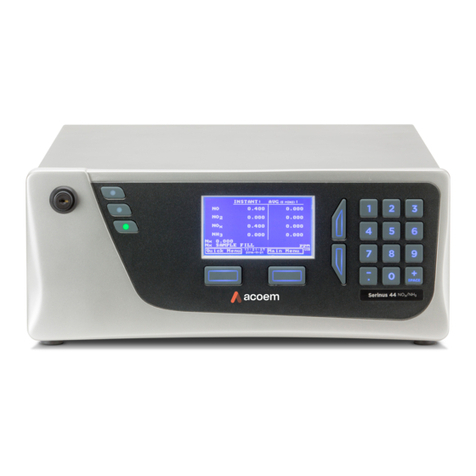
Ecotech
Ecotech Serinus 44 User manual
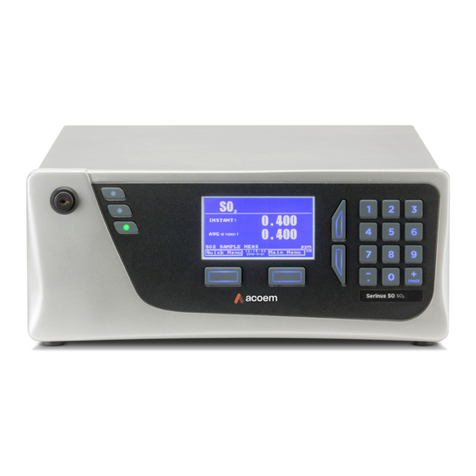
Ecotech
Ecotech Acoem Serinus 10 User manual

Ecotech
Ecotech A Series User manual
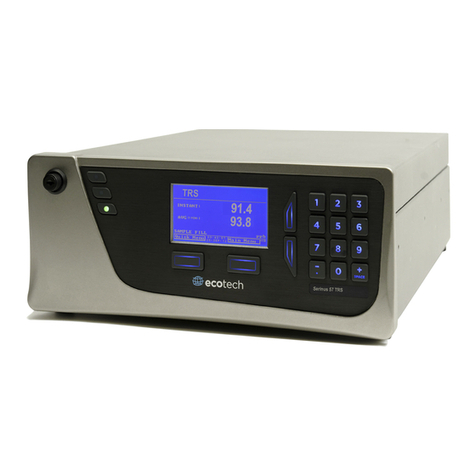
Ecotech
Ecotech Serinus 57 User manual
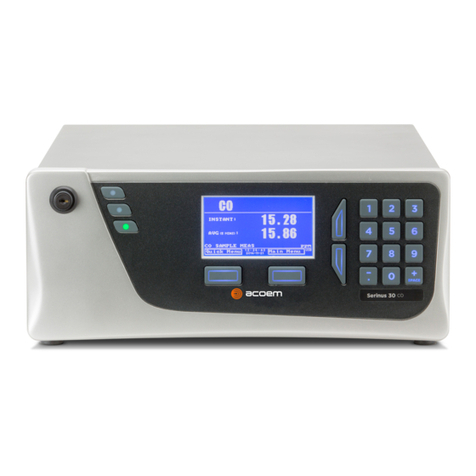
Ecotech
Ecotech Acoem Serinus 30 User manual

Ecotech
Ecotech Serinus 40 User manual
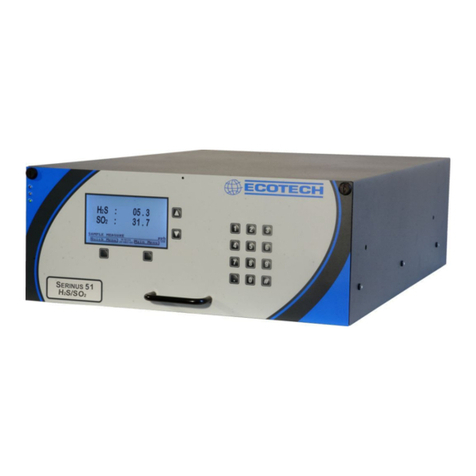
Ecotech
Ecotech Serinus 51 User manual
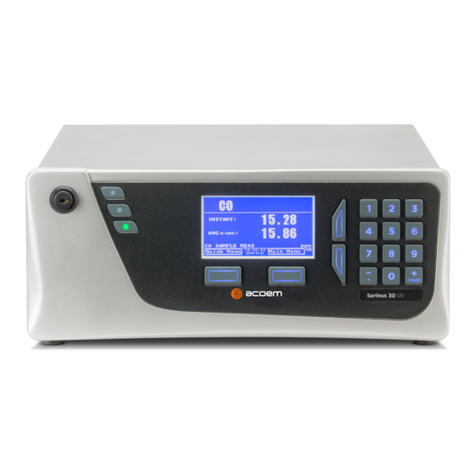
Ecotech
Ecotech Serinus 30 User manual
Popular Measuring Instrument manuals by other brands
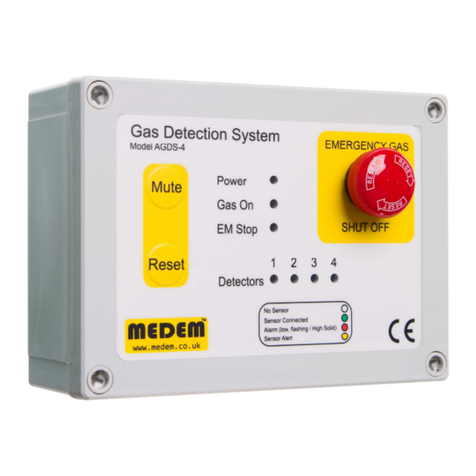
Medem
Medem AGDS-4 installation instructions

Hilti
Hilti PR 2-HS operating instructions
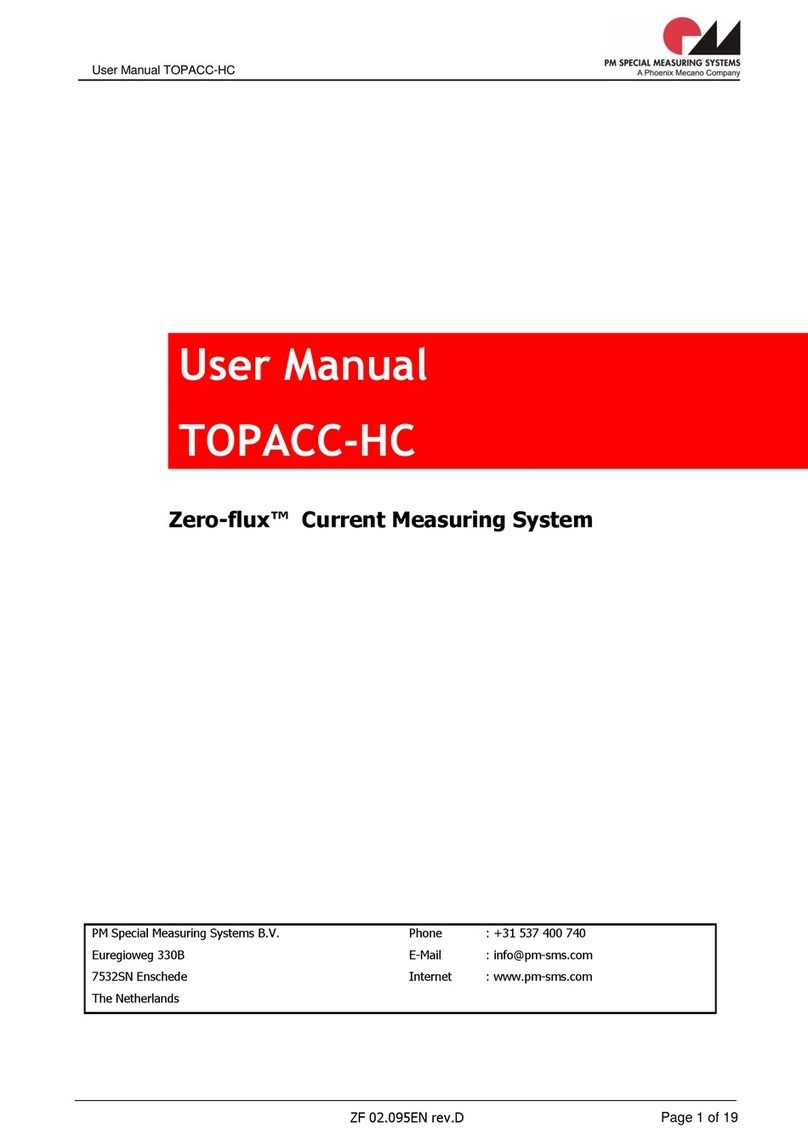
Phoenix Mecano
Phoenix Mecano Zero-flux TOPACC-HC user manual
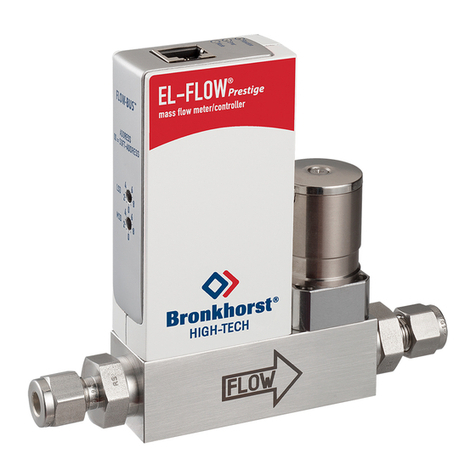
BRONKHORST
BRONKHORST EL-FLOW Prestige series instruction manual
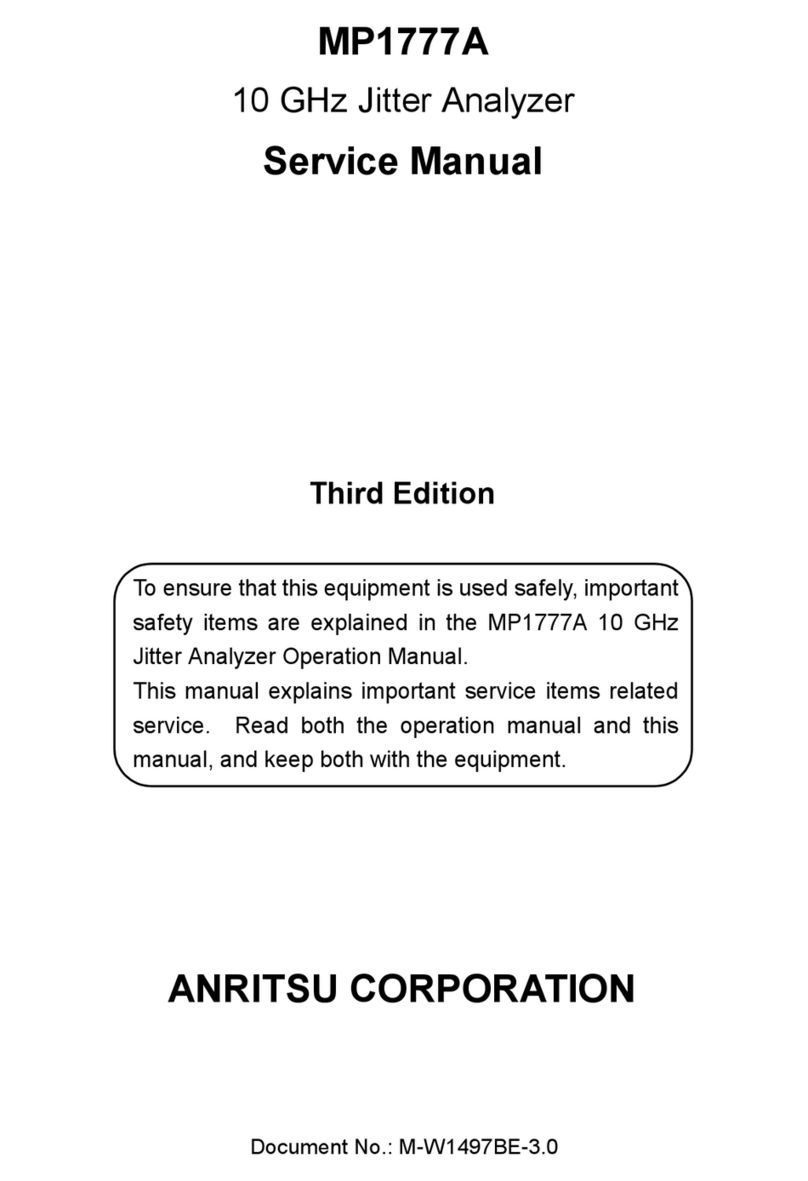
Anritsu
Anritsu MP1777A Service manual
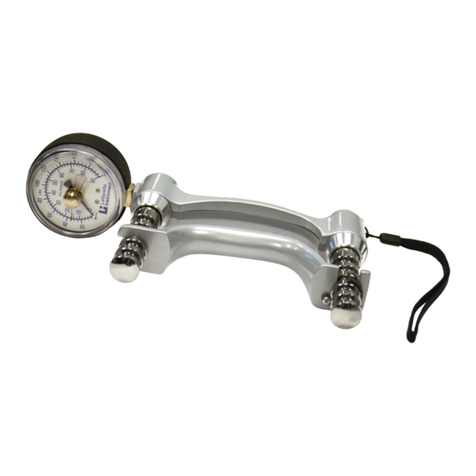
Lafayette Instrument
Lafayette Instrument J00105 User instructions
